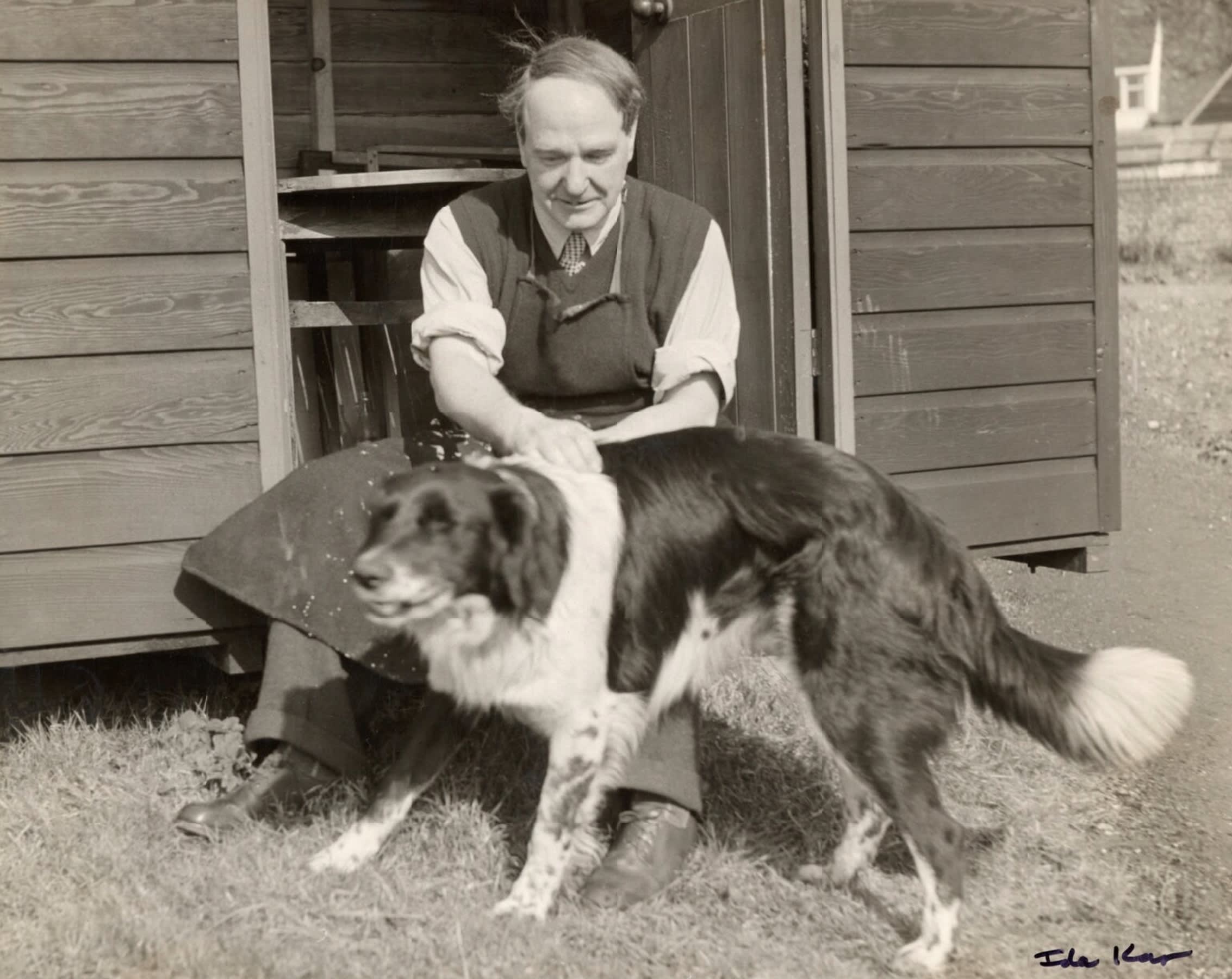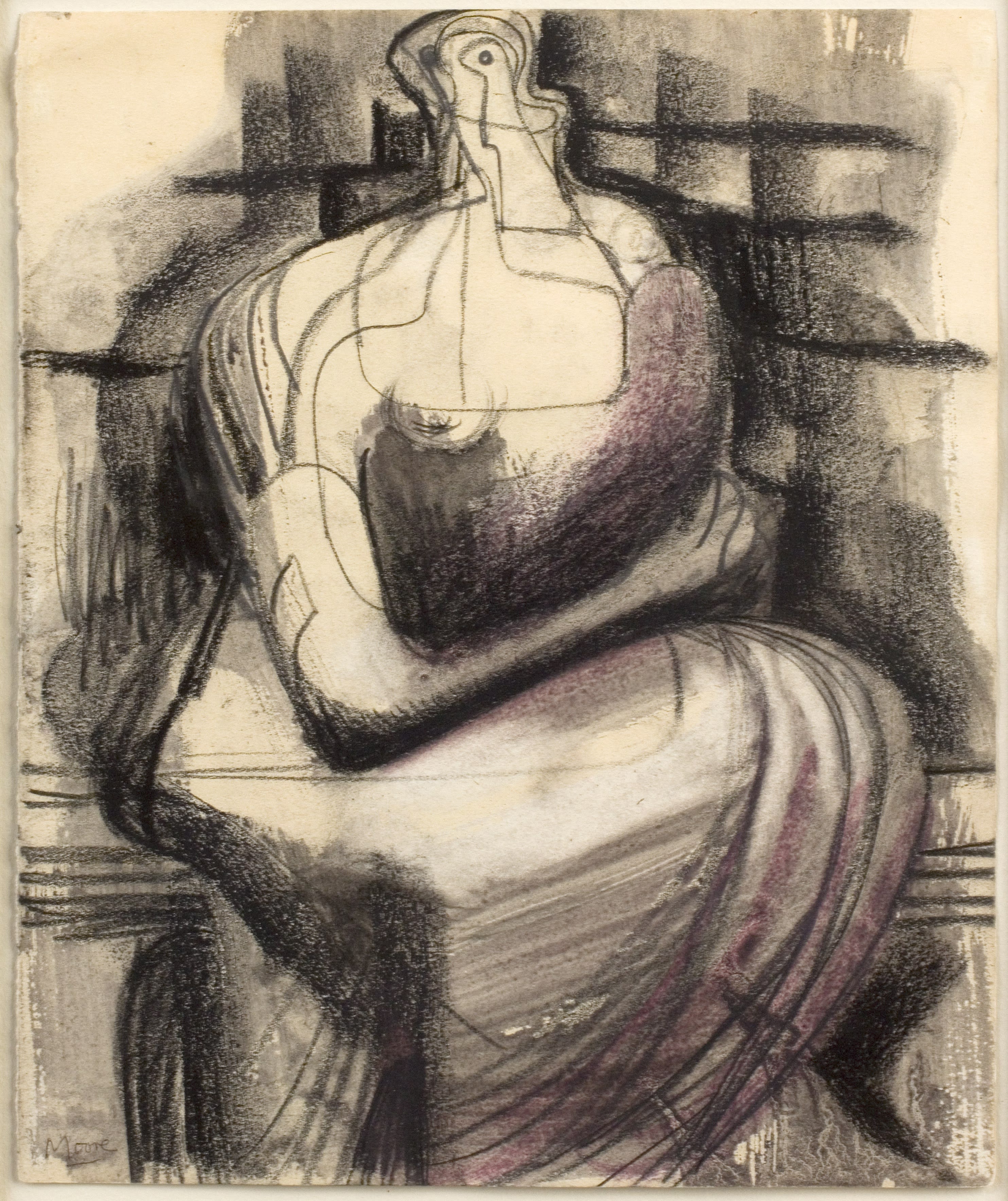The drawings of Henry Moore convey a sense of three dimensions in two, often equalling or even surpassing the substance and gravitas of the artist’s sculpture.
InSight No. 123
Henry Moore, Seated Woman, 1959
To build a wall, a bricklayer needs bricks. Some bricks are better than others – clays differ in colour and their shape depends on the method of moulding, either by machine cutting or, before industrial production, hand-pressed moulds. But one brick is as good another so far as functionality is concerned. The quality of the wall – the lines of the coursing, the sharpness of the mortar joints, the rigidity of the structure – will depend on the individual talents of the bricklayer. For the artist Henry Moore (1898–1986), his bricks were drawings and his walls sculptures. The craftsmanship of both was among the finest of his generation.

Moore’s drawings were the creative engine for his practice as a sculptor. Most were made in (and later disbound from) sketchbooks. He kept notebooks throughout his career to serve two interrelated functions – conceiving, rotating and transforming plastic ideas; and preparing three-dimensional sculptural projects. The mundane but important business of deciding a suitable form for a commission was often eased by the plurality of forms in which Moore had expressed a subject in his sketchbooks, thereby offering the client an opportunity to choose between variations. Beyond the artistic doodling implied by the notion of a ‘sketchbook’, these volumes fostered a rare combination of free-wheeling invention and sustained, project-specific problem solving.

As with much other draughtsmanship by Moore, Seated Woman suggests a sculptor’s interests in mass and volume. The figure is a product of pictorial invention, not observed from life, yet it has physical precision and credibility: the crooked right arm resting in the lap has weight; the knees, concealed beneath swathed drapery (of which more below), are bunched together and pulled back towards the figure. The figure is modelled using black pastel to suggest the play of shadow around the rotund shoulders, forearm and thigh. Neighbouring leaves from the same sketchbook, one of which is illustrated above, demonstrate Moore’s sustained effort of reiteration and thematic development, moulding a specific pictorial idea – in this case a monumental female figure situated in front of a grid-like wall – and using it to generate new but closely related pictorial arrangements.

As was often the case with his drawings, Moore’s seated women of 1959 belong to a cycle of work relating to a sculptural project. Made from Roman travertine marble and measuring over five metres in length, his Reclining Figure was installed at UNESCO’s headquarters in Paris in October 1958. Moore was exercised by the challenge of situating figural sculpture in relation to an architectural backdrop, and he produced various small-scale exploratory sculptures and drawings between 1955 and 1960. Seated Woman was made after the UNESCO commission was complete and is a telling example of how Moore continued to work through variations on a theme when the theme was sufficiently engaging. The black gridwork behind the figure acts as a screen against which the figure is silhouetted, its flat low-toned pattern throwing the figure into relief. In other drawings from the same sketchbook, the figure is enmeshed in the gridwork as the flat pattern projects forward and becomes a cage-like motif.

Notwithstanding ‘primitivist’ and surrealist inflections in his art, Moore was a cultivated acolyte of the classical past. The figure in Seated Woman has a grandeur and dignity redolent of certain marbles from the Parthenon. More specifically, its damp-fold drapery – the tight, shallow creases in the skirts around the knees and below – is directly connected with sculpture of the Hellenistic era when this stylised treatment first emerged. The layers of Moore’s work are densely packed, the handling is technically assured, and, as with the best bricklayers, his structures always stand up and weather gracefully.

Images:
1. Henry Moore, Seated Woman, 1959, pencil, pastel and watercolour on paper, 28.6 x 23.8 cm
2. Henry Moore with a dog, 1954, photographed by Ida Kar © National Portrait Gallery, London
3. Henry Moore, Seated Woman, 1959, Private Collection (HMF no. 2986) © Henry Moore Foundation
4. Henry Moore, Girl Seated Against Square Wall, conceived 1957-58, Private Collection © Henry Moore Foundation
5. Seated figure from the east pediment of the Parthenon, circa 447–433 B.C., British Museum, London
6. Seated Figure by Henry Moore

